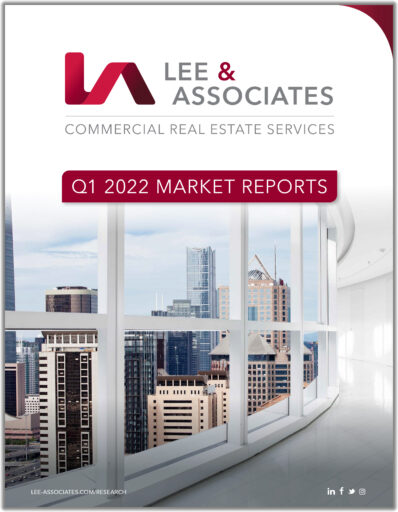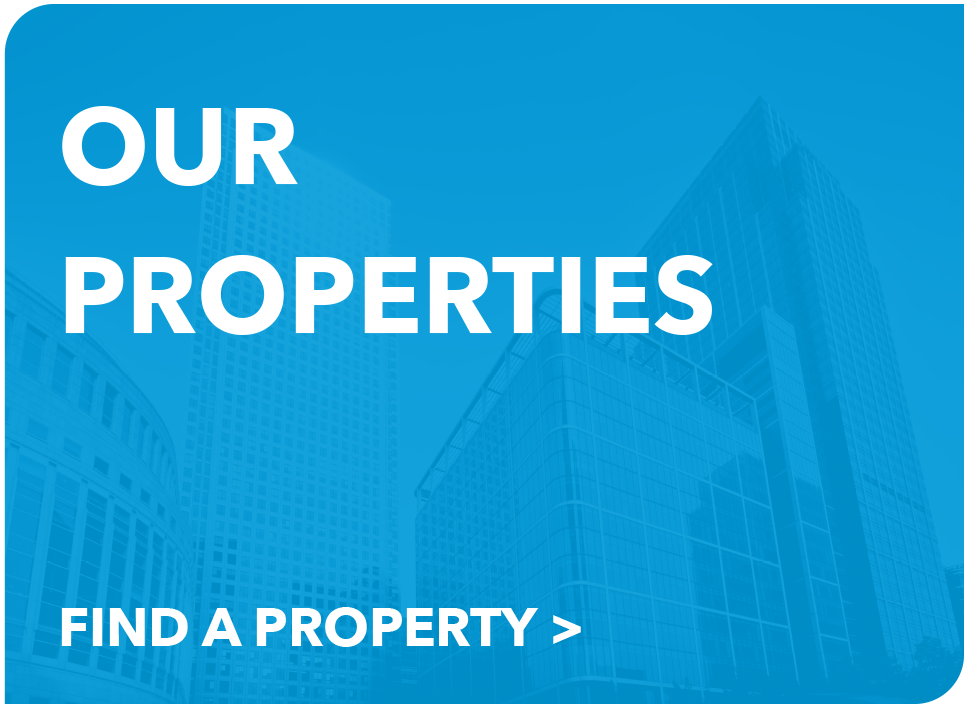INDUSTRIAL OVERVIEW: RENTS PUSHED ON STRONG DEMAND
Strong demand for industrial space throughout North America continued in the first quarter as vacancies fell to record lows and rent growth hit double digits. First quarter net absorption in the U.S. totaled 92.8 million SF, which was up 25% year over year but down 35% from the 143-million-SF average of the last three quarters of 2021. Annualized rents rose 10.1% in the U.S. and the average vacancy rate fell to 4.1%. Part of that was due to a pause in new construction starts early in the pandemic. However, once developers saw orders for consumer goods begin to skyrocket shortly after the lockdown, many made up for lost time. Currently, there are 816 million SF of new space underway in the U.S. with about 605 million SF landing on the market in the next four quarters. That’s a sharp increase from the total 342 million SF in completions since Q2 of last year. Nevertheless, even as new construction has ramped up to all-time highs, the availability of quality logistics space will remain tight.
Port markets, especially in Los Angeles, Seattle, Baltimore and Miami, where land for logistics facilities is scarce and rent growth is in the mid to high teens, are facing supply shortages for years to come. Constrained supply also has been a distinct characteristic of Vancouver and the inland port of Toronto, markets with vacancy rates of 0.8% and 0.9% respectively. Canada’s overall vacancy rate is 1.4%.
Brick-and-mortar and online merchants and logistics providers have been lashing down virtually any available space to accommodate current requirements and expansion plans. Since last summer, leasing volume is 65% above the quarterly average over three years prior to the pandemic. READ MORE >
OFFICE OVERVIEW: AWAITING ‘RETURN TO OFFICE,’ RECOVERY
After posting two straight quarters of modest growth and showing early signs of a recovery, the United States office market slipped into neutral in the first quarter and the national vacancy rate ticked up slightly to 12.3%, the highest since 2011. Tenants shed 468,602 SF in Q1 following net absorption gains of nearly 27 million SF in the second half of 2021, which ended the year 42.4 million SF in the red. Even though leasing activity has improved, it remains below the quarterly average of about 115 million SF prior to the lockdown. Rent growth has been nil. Gains will have to wait until positive net absorption returns along with reductions of sublease space, which totals nearly 200 million SF. Although the supply pipeline has slowed somewhat, there still is plenty of spec product under construction with 40% of the 142-million-SF pipeline listed as unleased. Among markets with the most supply underway are tech centers such as Boston, San Jose, Austin and Seattle.
In Canada, net absorption was negative 863,133 SF in Q1. It was in the red 3.1 million SF in 2021, but the nationwide vacancy rate remains in single digits. An increase of about 150 basis points pushing the vacancy rate to nearly 10% in the next 18 months is forecast as 23 million SF of new space is delivered. About 80% of the new construction is in Toronto and Vancouver, adding 4.7% and 8.3% respectively to inventories in each market. READ MORE >
RETAIL OVERVIEW: STRONG GROWTH CONTINUES IN Q1
The North American retail market put on another strong performance in the first quarter as the sector continues its pronounced rebound that began last year. There were 23.4 million SF of net absorption in the first quarter in the 11.8-billion-SF U.S. market. That’s a fivefold jump from Q1 of last year and slightly more than the average of the last three quarters of 2021, which saw 73.4 million SF of tenant growth for the year. The national average vacancy rate is 4.5%.
There has been similarly consistent demand for retail space in Canada, where annual net absorption has remained in positive territory throughout the pandemic, unlike the U.S. where growth was 28.7 million SF in the red in 2020. On the heels of last year’s 5.8 million SF of net absorption, Canada posted 1.3 million SF of Q1 growth. Its vacancy rate is 2.1%, a record low.
Foot traffic has returned to pre-pandemic levels. U.S. store openings outpaced closures for the first time since 2014. Since bankruptcy was sought in 2020 by more than 40 merchants, including Neiman Marcus, Lord & Taylor, JC Penney, Brooks Brothers and Ann Taylor, bankruptcies filings last year declined to a five-year low. However, with 2020’s flood of closings, landlords began repurposing large swaths of vacant space into nonretail uses such as warehousing and distribution.
Growth is being driven by increased demand for smaller spaces, which fell last year to a historic low average 3,000 SF. In addition, as retail follows rooftops, U.S. developers and national merchants are focused on growth markets in the West and South, turning away from many urban markets in the Midwest and Northeast that have underperformed the national average. READ MORE >
MULTIFAMILY OVERVIEW: RENTS, VALUES SOAR; DEMAND EASES
Following successive quarters of healthy and often unprecedented demand for apartments, tenant growth in the first quarter slowed with the onset of the Omicron variant of the coronavirus and as annual rent growth has soared into the teens. Meanwhile, apartment values have skyrocketed with the national average sale price hitting $244,343 per unit in Q1, an 18.4% year-over-year increase.
First quarter net absorption totaled 54,170 units, down 39% year over year. In 2021 tenant growth totaled 697,963 apartments, an 83% jump over the previous record of 381,288 units in 2020. Average effective rents in Q1 were $1,572, up 13.7% year over year and 16.4% since the lockdown. Some Sun Belt markets, such as Tampa, Phoenix and Austin, saw annual rent hikes of more than 20%.
Meanwhile, multifamily developers and landlords following migration patterns of workers during the pandemic are betting heavily on apartments across the South and Southwest where warm weather and business-friendly governments have attracted workers and employers from California and the Northeast. The rent growth also boosts New York and the Bay Area into positive territory, two markets hit hardest in the pandemic. San Francisco’s average rent of $2,972, up 8.3% in 2021, is the nation’s highest followed by New York City’s $2,881 and San Jose’s $2,816. READ MORE >




